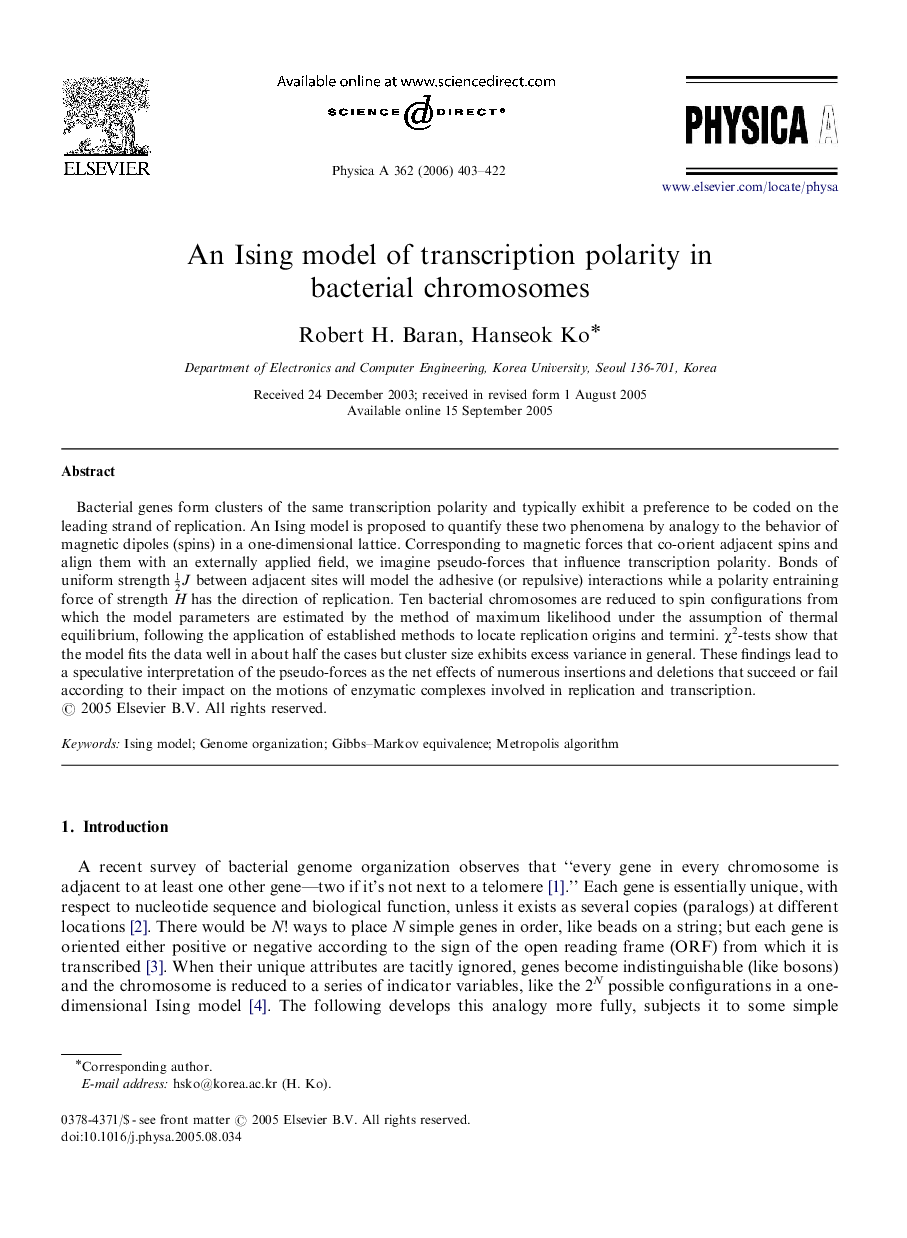| Article ID | Journal | Published Year | Pages | File Type |
|---|---|---|---|---|
| 979790 | Physica A: Statistical Mechanics and its Applications | 2006 | 20 Pages |
Bacterial genes form clusters of the same transcription polarity and typically exhibit a preference to be coded on the leading strand of replication. An Ising model is proposed to quantify these two phenomena by analogy to the behavior of magnetic dipoles (spins) in a one-dimensional lattice. Corresponding to magnetic forces that co-orient adjacent spins and align them with an externally applied field, we imagine pseudo-forces that influence transcription polarity. Bonds of uniform strength 12J between adjacent sites will model the adhesive (or repulsive) interactions while a polarity entraining force of strength H has the direction of replication. Ten bacterial chromosomes are reduced to spin configurations from which the model parameters are estimated by the method of maximum likelihood under the assumption of thermal equilibrium, following the application of established methods to locate replication origins and termini. χ2-tests show that the model fits the data well in about half the cases but cluster size exhibits excess variance in general. These findings lead to a speculative interpretation of the pseudo-forces as the net effects of numerous insertions and deletions that succeed or fail according to their impact on the motions of enzymatic complexes involved in replication and transcription.
